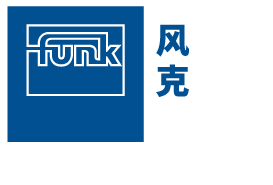Inflation, dwindling resources and the climate emergency: factors influencing the insurance market in 2022
Market conditions in industrial insurance remain extremely tough. How inflation and supply chain problems impact loss adjustment and insured sums – and what companies now need to bear in mind.
The climate emergency, coronavirus pandemic and now war: the current situation in Europe is responsible for immense suffering. Countless people have lost their possessions, their health, their home or even their lives.
Even those who are not affected directly are feeling the indirect economic consequences: goods are often scarce and are becoming increasingly expensive. This trend is set to intensify, chiefly due to bottlenecks in global supply chains due to the coronavirus pandemic, as well as rising energy and producer prices caused by the war in Ukraine. Whether for a private consumer going to the supermarket, a manufacturer buying commodities or a builder purchasing materials: prices are going up. In April 2022, producer prices were up by some 34 per cent on the previous year. Inflation is now also increasingly becoming a challenge in the insurance sector.
‘Settling a claim for property damage – e.g. in the event of a factory burning down – now costs considerably more than it did a year ago, as the reconstruction/replacement costs have risen,’ explains Nadine Benkel, Market Management Team Leader at Funk. ‘This effect is chiefly noticeable in the property insurance, transport insurance and technical insurance segments.’ Along with industry, the property sector is also heavily affected – and premiums may increase further here in the medium term.
Inflation increases the risk of underinsurance
Inflation was already noticeable in winter 2021/2022, but was dismissed as a temporary phenomenon by most central banks. Russia’s war of aggression against Ukraine has not only perpetuated the situation, but compounded it. Continuing inflation, with the added costs in loss adjustment described above, now leads to the danger of underinsurance at many companies. ‘Alongside the greater commodity values of stocks and resources such as metal, oil and gas, it may be the case that building and contents values are underestimated in light of higher reconstruction/replacement costs, meaning that they need to be adjusted,’ recommends Dr Alexander Skorna, Managing Partner at Funk Consulting. In this regard, it is important to consider both the net cost of materials and the increased wage costs – an effect of the skills shortage – in addition to the sums insured for business interruptions arising due to problems in the supply chain. Skorna: ‘Business interruptions often extend beyond the previously forecast loss amount. Here, companies should also review and, where necessary, extend the agreed liability periods.’
Review insured sums early
In the event of a claim, underinsurance can have critical consequences for a company if no underinsurance waiver has been agreed. Insurers are entitled to reduce the settlement sum for property damage on a pro rata basis if the insured sum is substantially lower than the actual restoration costs.
The appreciation clauses contained in the majority of insurance contracts only have a limited effect here. Nadine Benkel: ‘These clauses are designed to ensure that insured sums are automatically adjusted to reflect changing prices. On account of high inflation, however, these standard clauses no longer always cover the increased value of insured assets.’ Therefore, Funk advises companies to review the sums insured in respect of buildings, machinery, systems and stock. Business interruption sums and, where applicable, combined limits of indemnity should also be subjected to a plausibility test. Funk experts will be happy to support you in this area and are on hand with advice and assistance.
Impacts on default risks and company financing
Where accounts receivable are insured against default risks by means of credit insurance, rising sale prices result in the need for a greater credit limit. This currently coincides with an increasingly cautious underwriting policy on the part of credit insurers, although the situation has eased slightly compared to mid 2021, for example.
Alongside individual credit limits, companies should also consider the limit of indemnity stipulated in every credit insurance policy. This caps the indemnity that the insurer will pay for claims in a single year of insurance; it should be at a level that covers at least the greatest single risk (or purchasing group in the case of affiliated companies).
Higher prices for upstream products also result in a greater need for liquidity. Flexible, bank-independent financing instruments (e.g. factoring) often prove to be a beneficial addition to traditional bank financing. Suppliers of extremely scarce upstream products are increasingly using their market advantage to negotiate advance payments for future deliveries with their buyers. Besides the challenge in terms of working capital management, this also leads to an additional default risk on the supplier side, which – like the default risks of goods receivable – can be transferred to an insurer. Funk specialists devise suitable solutions, thereby helping companies to make the most of their market opportunities in the current challenging environment.
Climate emergency leading to record losses
Due to the prominence of the coronavirus pandemic and the war in Ukraine, the climate emergency has slipped down the news agenda. Its presence can still be felt, however, as demonstrated by the tornadoes that recently wreaked havoc in several places in the German state of North Rhine-Westphalia. Extreme weather disasters could also lead to a sharp rise in the number of claims due to natural hazards.
2021 was a record year in this respect: natural disasters such as tropical cyclones, forest fires and flooding caused damage totalling 280 billion US dollars, of which less than half was insured. Having caused damage to the tune of some ten billion euros, storm Bernd is the highest loss event in German insurance history. In 2022, these record sums may be broken: the German Insurance Association (GDV) estimates the damage caused in Germany by the February storms alone at some 1.4 billion euros. These rising losses due to the climate emergency are having an adverse effect on the balance sheets of insurers, who pass some or all of these costs onto their customers.
Insurance market set to remain tough
The outlined developments are having a particularly adverse impact on property insurers, who have already been saddled with various insurance-related challenges for several years. Despite the premium increases witnessed in recent years, it is estimated that German property insurers have suffered financial losses totalling approx. 7.5 billion euros over the past four years. It is therefore safe to assume that insurers will continue to face pressure on margins in 2022 and that they will press ahead with their restructuring efforts. This trend will have a direct impact on insured companies, who are already grappling with substantial fire safety requirements, contractual limitations such as cyber and pandemic exclusions, and reduced capacity. This year, territorial restrictions for Russia, Belarus and Ukraine will also be added to insurance contracts due to the war in Ukraine.
How companies can optimise their risk management now
- Funk offers a broad spectrum of services to support companies in challenging times:
- Using the SMART BI Check, companies can verify the plausibility of sums insured, limits of indemnity and other limits in the context of interruption insurance.
- The Risk Analysis function focuses on natural hazards such as flooding, storms, etc. and provides a plausibility assessment of insurance cover.
- On request, Funk will be happy to assist with political risks worldwide and provides suitable customised insurance solutions.
- In light of the pending Duty of Care in Supply Chains Act (LkSG), it also makes sense to analyse supplier risks.




